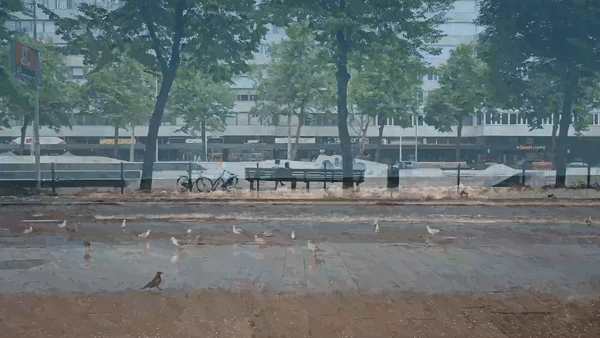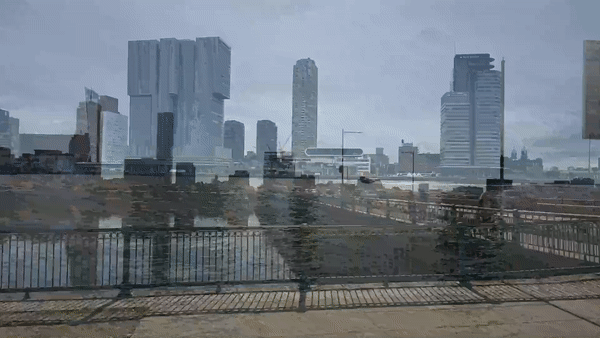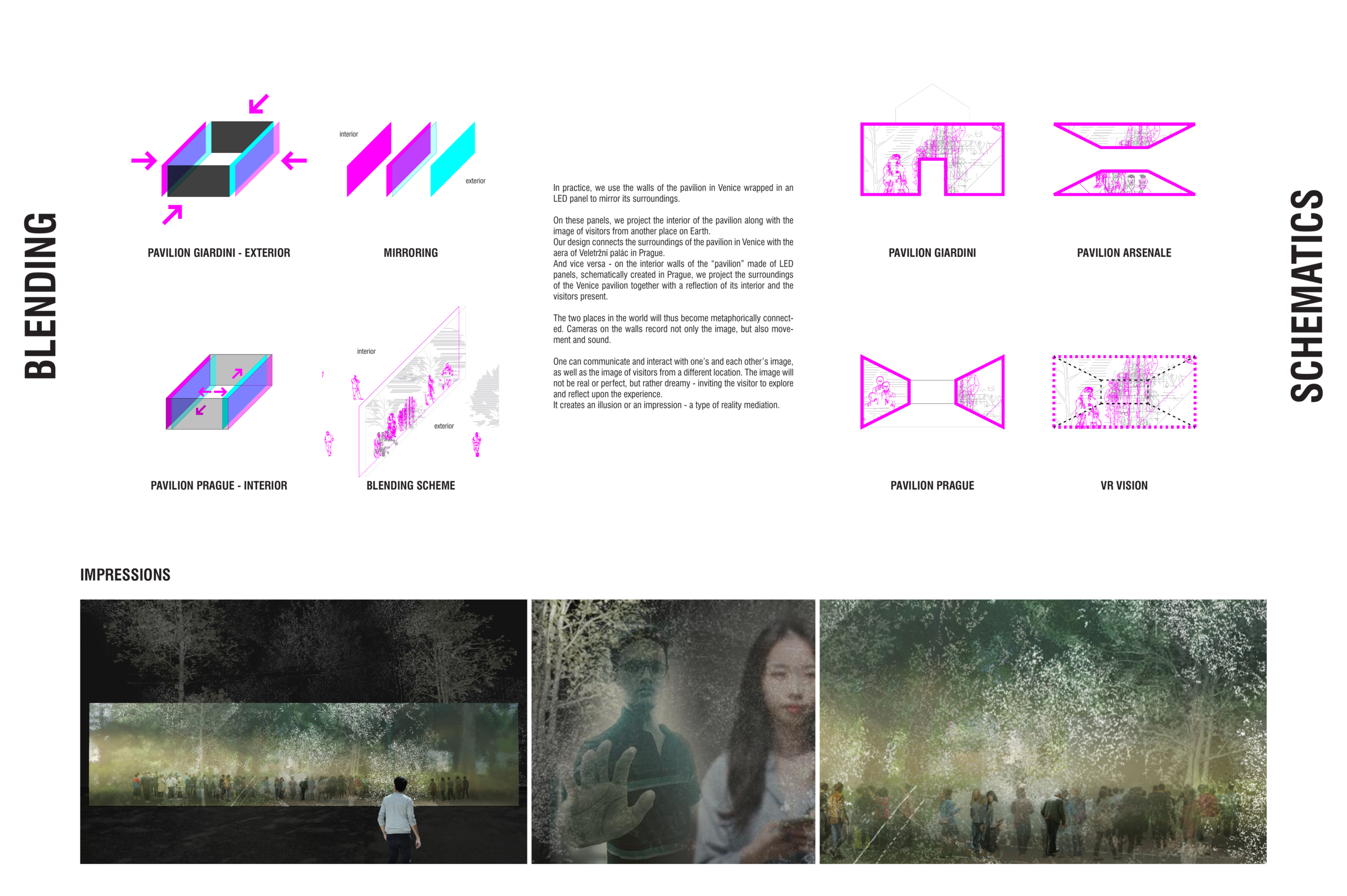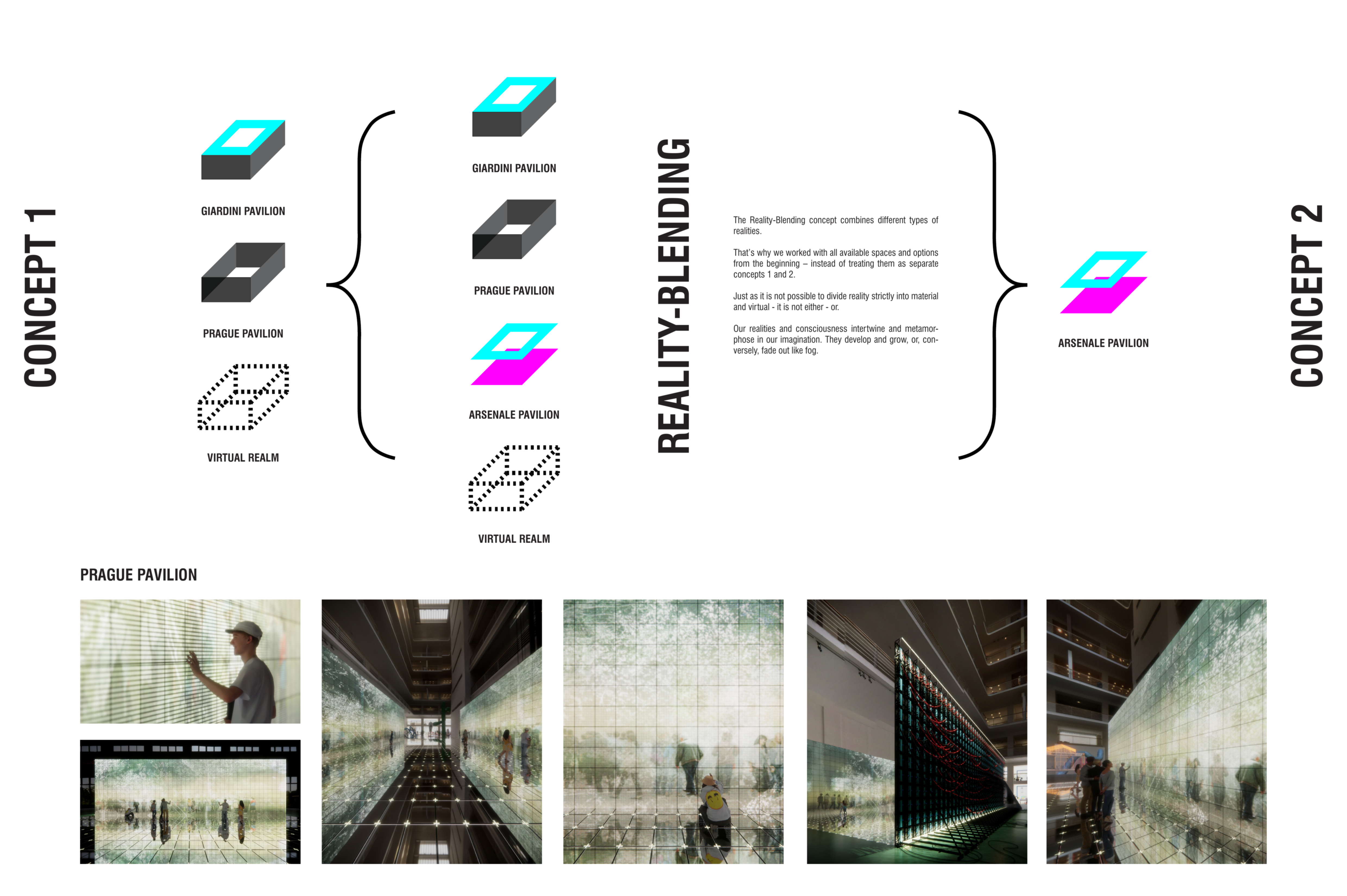Our realities and consciousness intertwine and metamorphose in our imagination. They develop and grow, or, conversely, fade out like a fog.
![]()
“New technologies continuously appear and disappear giving us unfiltered glimpses of life in parts of the globe we will likely never visit, much less understand. But to see both near and far simultaneously is also, as Du Bois and Fanon famously put it, a form of ‘double consciousness’, the internal conflict of all subordinated or colonised groups, which describes the majority of the world, not only ‘there’, in the so-called Developing-, Third-, and Arab Worlds, but ‘here’ too, in the metropoles and landscapes of the global North.” Lesley Lokko
The Reality - Blending concept combines different types of realities.
To train abstract thinking, in order to understand complex issues better.
To overcome and/or ignore differences, imperfections, and the limits.
No more Berlin or Trump wall, apartheid, or discrimination - to connect instead of to divide. It is not possible to divide reality strictly into material and virtual - it is not either - or. None of the realities is an improvement of the other. Rather, they together serve as an extension of the human experience. Instead of reality and virtuality, two such contrasting entities, we explore several realities - to create a completely new one - the so-called new consciousness. No more hostile, inaccessible objects with a hidden function or mystery inside - instead, we turn the object “piece of art” into a portal, a gate, an oracle, a medium that connects various places on Earth.
As described in Clarke's novel, the Firstborn discovered later how to transfer their consciousness into computers, and thus they became thinking machines. In the end, they surpassed even this achievement, and were able to transfer entirely from physical to noncorporeal forms — the "Lords of the Galaxy" — immortal and capable of travelling at great speeds. The Firstborn had abandoned physical form, but their creations, the Monoliths, remained, and these continued to carry out their original assignments. (en.wikipedia.org)
![]()
The two places/environments in the world will thus become metaphorically connected. Subsequently, the projected mirror blends with the image from another place and vice versa. One can communicate and interact with one's and each other’s image, as well as the image of visitors from a different location. The image will not be real or perfect, but rather dreamy - inviting the visitor to explore and reflect upon the experience. It creates an illusion or an impression - a type of reality mediation. An osmotic object allows the flow of experiences and perceptions, through which visitors and environments can communicate and interact with each other. The image and its sharpness change according to the movement of the viewer, the position towards the wall and the position of the camera - the viewer explores and co-creates these images. We return to the first metaphysical attempts of transferring image and movement – camera obscura in high-tech conditions.
![]()
Double consciousness is a term coined by W. E. B. Du Bois in his book "The Souls of Black Folk" in 1903. It refers to the psychological experience of feeling as though one's identity is divided into several parts, making it difficult to have a unified sense of self. Du Bois used the term to describe the experience of African Americans in the United States, who were forced to navigate the contradictions of being both American and Black in a society that often saw these identities as mutually exclusive (en.wikipedia.org).
The concept of double consciousness has since been applied to other groups who experience similar conflicts between their social identities (plato.stanford.edu).
What about us, all migrants, powered by ambitions, forced to leave/move by economic or political reasons. We are formally free, leaving our own country and/or society full of bias and hypocrisy. These circumstances make us voluntarily migrants, living our own new consciousness. Could it be the fuel of creativity?
Who would Andy Warhol be if his parents did not immigrate to the United States?
It is not easy to democratise any society, as it requires the ability to listen to other opinions. In this regard, in Slovakia, you can hear either sad silence or loud screaming. Xenophobia, clientelism, homophobia, protectionism and normative corruption consume Slovak society like poison. The pressure of the government elites is beyond tolerable, feeding the mindset of endlessly searching for an imagined enemy. Open minded people, people who believe in diversity, and who want dialogue are suppressed and strictly rejected by the rigid majority. This dark reality in our country forced us to leave it and look for a space for artistic self-expression - an inseparable part of our identity and self-determination.
![]()
![]()
2001: A Space Odyssey, 2050.plus, Chimamanda Ngozi Adichie, David Adjaye, Afrofuturism, Isaac Asimov, Black Lives Matter, Berlin Wall, Blade Runner, Camera, Camera Obscura, CGI, Double Consciousness, Cyberpunk, Fatal Virtual - Peter Hetesa, Fatamorgana, Gamma Ray, George Floyd, Hologram, Leley Lokko, The Last Supper - Jacopo Tintoretto, The Last Supper - Leonardo da Vinci, LED panels, Fabiola Jean - Louis, Israeli West Bank Barrier, Olalekan Jeyifous, Kaaba, Matrix, Mandalorian, The Monolith, Modulator, Munchen 1972 Olympic Visual, Neuromancer - William Gibson, Barack Obama, Perception - Jan Sepka, Photography, The Sacrament of the Last Supper - Salvador Dali, Sacred Allegory - Giovanni Bellini, Star Wars, Jomo Tariku, Trump Wall, Tupac Hologram Snoop Dogg and Dr. Dre Perform Coachella Live 2012, White Cube - OMA, Liam Young
Credits: Jozef Olsavsky, Andrej Durik, Juraj Biros, Dorota Olsavsky, Matej Vakula










